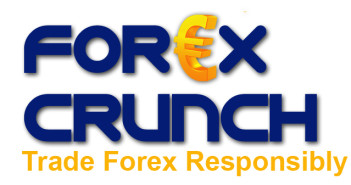Guest Post by John Forman
John Forman is a Forex author and expert. He is the Senior Foreign Exchange Analyst for the IFR Markets group of Thomson Reuters and frequent blog poster on Currensee.com.
You may be familiar with Marc Chandler from appearances on CNBC and/or reading articles he’s published in a number of venues. Chandler is currently the Chief Foreign Exchange Strategist at Brown Brothers Harriman, having prior held a similar post with HSBC. He also teaches at NYU. His recently published book, , is the subject of this review.
What Chandler looks to do with Making Sense of the Dollar is to dispute many of the commonly held views about the US currency, international trade, and related economic and political considerations. He does this by presenting ten myths and criticisms of them. Those myths are:
- The Trade Deficit Reflects US Competitiveness
- The Current Account Deficit Drives the Dollar
- You Can’t Have too Much Money
- Labor Market Flexibility is the Key to US Economic Prowess
- There is One Type of Capitalism
- The Dollar’s Privileged Place in the World is Lost
- Globalization Destroyed American Industry
- US Capitalist Development Prevents Socialism
- The Weak US Dollar Boost Exports and Drives Stock Markets
- The Foreign Exchange Market is Strange and Speculative
Viewing the book from the perspective of a forex trader, I found it to be a very interesting and potentially enormously useful read. In some places the author could have provided more evidence to support his assertions, and in places he gets repetitive, the book certainly contains a lot of thought-provoking and informative material.
The sections of the book most specifically interesting in regards to gaining insight into the workings of the dollar are 1, 2, 6, and 9. This isn’t to say the others aren’t. It’s just that these four most directly get to the major issues a lot of market watchers cite as to why the dollar has lost or can be expected to lose its high standing.
The trade and current account deficits are things many folks, professional and otherwise, point to as unsustainable issues which eventually will have to correct – to the detriment of the dollar. Chandler says both are flawed measures based on outdated methodologies which do not properly account for modern trade and capital flow. That’s the focus of Myths 1 and 2.
In regards to Myth 6 about the dollar losing its stature, the author brings up a number of defenses for the greenback. One of them is the view that I myself have expressed on several occasions that one of the reasons that the dollar is the top reserve currency is the breadth and depth of the US financial markets. No other country or region can come close to matching them, making the US the place where excess savings looking for a safe place to sit comes, as witnessed by the dollar’s gains during risk aversion. This is why the greenback has not actually lost ground to in terms of the total % of global reserves.
Regarding the idea that the lowering dollar’s exchange rate will boost exports and reduce imports (Myth 9), Chandler indicates that there’s no real evidence to support that notion. For example, he notes that in the early 90s a pair of Congressmen suggested the dollar was 20% overvalued and needed to come down to close the trade gap. The dollar trended down for most of the decade, losing about 20% of its value in that span, but the trade deficit actually expanded. The author also points out that much of the cost of import goods to US citizens is actually added on to them once they reach our shores, so that the value of the dollar isn’t really a major influence on the prices we see. And of course he also points out that the largest portion of our imports comes in the form of oil and related products, the demand for which is relatively inelastic over the short- to intermediate-term.
New forex traders can often be heard to ask questions about what fundamental factors drive exchange rates, and with good reason. It can be a very confusing market in that regard as things which are clear drivers in one direction at one point in time can be drivers in the other direction later. Chandler does a really good job in the space of a couple of pages in the 10th myth chapter of addressing the primary factors impacting the forex market and the concept of currency valuation. That’s really the only place “trading” of currencies is discussed. The rest of the book is more focused on looking at the big macro dollar picture.
As much as Chandler makes some interesting points about Capitalism vs. Socialism, in my view he spends too much time on the subject. One could even ask whether he needed to address it at all, but I was fine with it overall. He just got a bit repetitive on the subject.
The bottom line as far as Chandler is concerned is that the dollar is just fine the way it is and that attempts to focus on imports and exports and weaken the dollar to influence them could produce serious negative consequences. I definitely recommend Making Sense of the Dollar to anyone interested in the macro view of the dollar and global currency markets.
Feel free to check out my other trading book reviews.
